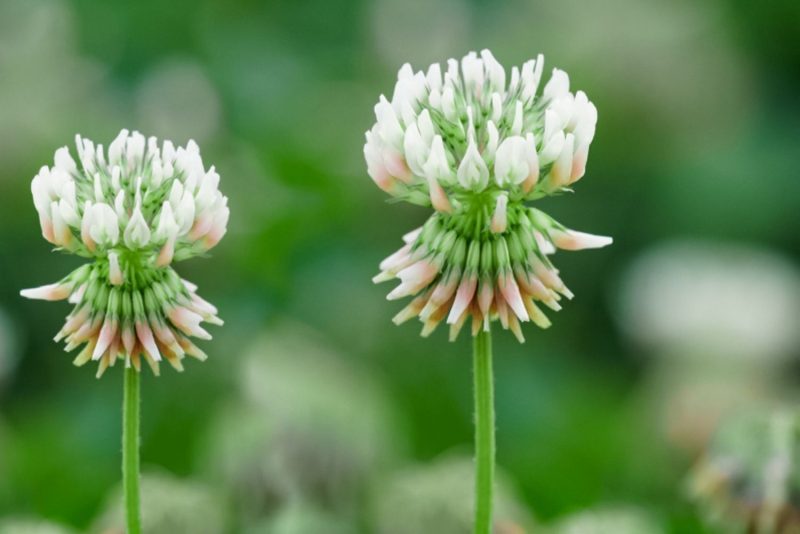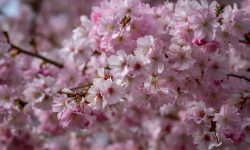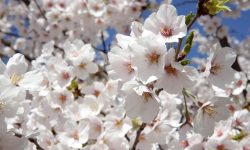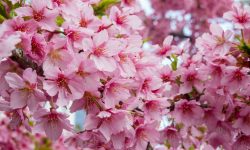Clover is more than a simple plant in fields and gardens. Its delicate flowers create a soft, natural carpet while supporting pollinators like bees and butterflies. Many homeowners and gardeners enjoy clover not only for its beauty but also for its role in enriching the soil with nitrogen and reducing the need for fertilizers. Knowing when clover blooms helps you capture its full value in both aesthetics and function.
Different clover varieties bloom at different times, influenced by climate, soil, and care. By understanding these cycles, you can create a vibrant display of color that lasts throughout the season. With a few smart techniques, it is even possible to extend clover’s flowering period, keeping your garden alive with charm and ecological benefits for longer.
When Does Clover Bloom?

Clover usually begins blooming in late spring and continues through the warm months. The exact timing depends on the species and the climate where it grows. In temperate regions, white clover often starts in May and lasts until September, while red clover may begin a little earlier. In warmer areas, clover can flower nearly year-round, especially if conditions are favorable. Observing local weather and soil patterns gives the clearest picture of when the first blossoms will appear.
The bloom period is also influenced by soil fertility, water availability, and sunlight. Clover thrives in sunny spots with well-draining soil and balanced nutrients. When these conditions align, flowering comes quickly and spreads across fields or lawns in waves of color. If conditions are less ideal, bloom times may shorten, and flower production can be limited. This makes proper site selection and soil care essential for consistent clover flowering.
Understanding the bloom period is important not only for aesthetics but also for ecological benefits. Clover flowers attract bees, butterflies, and other pollinators, making them vital for biodiversity. Farmers also use bloom timing to support forage availability for livestock. By knowing when clover blooms in your region, you can plan planting, mowing, and care strategies that align with its natural cycles. This ensures you get the most beauty and utility from every flowering season.
Factors Affecting Clover Blooming
Climate Influence
Climate is one of the strongest forces shaping clover’s bloom cycle. In regions with cooler springs, clover tends to bloom later, often waiting for soil temperatures to rise enough for growth to stabilize. Conversely, in warmer climates, the flowering season can start weeks earlier, sometimes as early as late winter. Seasonal variations such as prolonged rain or early heat waves can either prolong or shorten the flowering window. These natural patterns highlight why gardeners must adapt care techniques to local conditions.
Extreme weather events also affect flowering quality and duration. Heat waves can cause blossoms to wilt prematurely, while cold snaps may delay the initial bloom. Rainfall patterns are equally influential, since steady moisture promotes extended flowering, whereas drought stresses plants and reduces bloom output. Long days with plenty of sunlight also encourage abundant blooms, while shaded or cloudy conditions may suppress them. By observing weather cycles, adjusting watering schedules, and protecting plants during harsh spells, gardeners can help clover thrive despite environmental challenges. This careful attention ensures steady flowering that aligns with seasonal rhythms.
Soil Conditions
The health of clover blooms is directly tied to soil quality. Well-draining soil enriched with organic matter provides the best foundation for strong flowering. Nutrient-rich soil ensures that clover produces abundant blooms with vibrant color. Essential minerals, especially phosphorus and potassium, are vital for flower production, while balanced nitrogen levels support healthy foliage without sacrificing blossoms. Soil that is compacted or depleted often results in fewer and weaker flowers, reducing the impact of blooming patches.
Moisture balance is another critical soil factor. Clover roots need consistent water access, but oversaturation can cause root rot and hinder growth. In contrast, prolonged dryness forces plants into stress, leading to a shorter flowering period. Regular soil testing and amending with compost or natural fertilizers help maintain the right nutrient balance. Adjusting pH toward slightly acidic to neutral levels ensures clover can absorb nutrients efficiently. By creating optimal soil conditions, gardeners encourage clover to bloom longer and with greater resilience, even in demanding environments. Healthy soil is the foundation for strong and lasting blossoms.
Care and Management Practices
How clover is managed plays a major role in its flowering success. Mowing, for example, can either limit or encourage blossoms. When clover is cut too frequently or too short, plants expend energy on survival rather than producing flowers. Allowing enough growth before mowing promotes regrowth and triggers a fresh flush of blooms. Timing is crucial, as mowing right after the first bloom cycle can extend the overall season. This method creates a balance between visual appeal and prolonged flowering.
Sunlight exposure is another key aspect of management. Clover thrives in areas with full sun, though partial shade can still support growth with fewer flowers. Overcrowding is also an issue, as dense patches compete for nutrients and light, reducing bloom intensity. Regular thinning or dividing helps maintain balance and supports healthier flowering. Fertilizing lightly after mowing encourages regrowth without overwhelming plants with excess nitrogen. With thoughtful care practices, clover’s natural bloom cycle can be maximized, providing beauty, biodiversity, and soil benefits for a longer period. Proper management ensures both consistent blossoms and lasting plant health.
Blooming Period of Different Clover Varieties
White Clover
White clover is one of the most common types found in lawns, fields, and meadows. Its bloom season usually begins in late spring, around May, and continues well into early autumn. In mild climates, flowering can last even longer, with new blooms appearing steadily throughout the summer months. Its small, round, white blossoms provide a soft but eye-catching carpet that attracts bees and other pollinators consistently. This makes white clover a key species for biodiversity and pollination cycles in both rural and urban landscapes.
The resilience of white clover allows it to flower under varying conditions. With adequate moisture and sunlight, it produces waves of blooms that brighten landscapes for months. Mowing white clover at the right time can encourage fresh flowers, extending its flowering window beyond the natural cycle. White clover also improves soil health by fixing nitrogen, helping nearby plants grow stronger. Its long blooming period not only creates visual appeal but also provides ecological and agricultural value, making it a reliable choice for gardeners, farmers, and land managers.
Red Clover
Red clover is valued for both its striking flowers and agricultural benefits. Its bloom period typically begins in mid to late spring, often earlier than white clover. The flowers are larger and more vibrant, appearing in shades of pink to deep red. In many regions, red clover blooms from May to September, offering an extended display of beauty that draws pollinators. Bees especially favor red clover blossoms, making them a vital resource for honey production. Its ability to produce abundant nectar highlights its importance in agricultural ecosystems.
Unlike white clover, red clover often requires more fertile soil to maintain consistent blooms. When properly cared for, it can provide a strong flush of flowers followed by smaller waves later in the season. Farmers frequently use red clover as forage, so bloom timing also determines grazing schedules. Gardeners can extend its bloom period by maintaining healthy soil and trimming at strategic times. With consistent care, red clover balances ornamental charm with agricultural value, ensuring reliable flowers throughout the growing season.
Crimson Clover
Crimson clover stands out for its tall, cone-shaped blooms with vivid scarlet hues. It is most often used as a cover crop but also adds dramatic seasonal color to fields and gardens. Its blooming period generally starts in mid-spring, usually around April, and continues into early summer. The bright flowers appear in dense clusters that create a striking visual impact across large areas. During its peak, entire fields of crimson clover glow with vibrant red, offering a unique seasonal spectacle.
This clover variety has a shorter bloom window compared to white and red clover. Once the weather becomes hot in midsummer, flowering declines quickly, leaving behind green foliage that enriches the soil. However, its concentrated blooming period is highly beneficial for pollinators, providing an early-season nectar source that helps sustain bees and butterflies before other flowers appear. With careful planting and proper timing, crimson clover can fill the seasonal gap, ensuring a continuous supply of blooms when paired with other clover varieties. It offers both beauty and ecological benefits in a compact flowering season.
How Long Does Clover Bloom Last?
The duration of clover blooms depends largely on the species, climate, and level of care provided. On average, clover begins flowering in late spring and continues through the summer months, often lasting several weeks to a few months. White clover, for example, has one of the longest flowering windows, sometimes blooming from May until the first frosts arrive in autumn. Red clover usually lasts from late spring into early fall, while crimson clover has a shorter but more concentrated flowering period. These differences highlight the importance of knowing which clover variety you are growing.
Environmental conditions also play a critical role in bloom longevity. When clover receives adequate sunlight, steady moisture, and fertile soil, its flowers last longer and appear more frequently. Drought, poor soil, or overcrowding can shorten the bloom cycle, reducing both the number of flowers and the overall visual impact. In warmer regions with mild winters, clover may even flower multiple times a year, creating a longer season than in cooler climates. Adjusting care methods to match local conditions helps extend the bloom period naturally.
Human management practices further influence how long clover will remain in bloom. Timely mowing, for instance, can trigger regrowth and a second flush of blossoms. Fertilizing after the first bloom wave also supports new flower development. If clover is left completely unmanaged, it may bloom heavily at first but taper off quickly. With proper timing and balanced care, gardeners and farmers can stretch the flowering season significantly, ensuring both beauty and ecological value across many months of the year.
Benefits of Clover Blooming
Clover blooms offer far more than just visual charm in fields and gardens. Their blossoms attract a wide variety of pollinators, including bees, butterflies, and other beneficial insects. These creatures depend on clover as a steady source of nectar and pollen, particularly in periods when other flowers are scarce. By supporting pollinator populations, clover blooms indirectly boost fruit and vegetable production in surrounding areas, creating a ripple effect of ecological benefits. A healthy population of pollinators ensures stability in natural ecosystems and food systems alike.
Beyond pollinator support, blooming clover plays an important role in soil health. As a legume, clover naturally fixes nitrogen from the air into the soil, enriching it for future crops or neighboring plants. When clover flowers and later decomposes, it adds organic matter back into the ground, improving soil texture and fertility. This process reduces the need for synthetic fertilizers, making clover an environmentally friendly choice for sustainable gardening and farming. The longer the bloom season lasts, the greater these soil benefits become. Clover also helps reduce erosion by covering bare ground, protecting topsoil during heavy rains.
Clover blooms also provide direct value to farmers and livestock. Flowering clover is often used as forage, supplying nutrient-rich feed that enhances animal health and milk production. For beekeepers, clover honey is one of the most popular and widely produced varieties, known for its mild flavor and versatility. On a broader level, blooming clover fields create landscapes filled with seasonal color, combining practical benefits with natural beauty. These combined advantages make clover blooms an asset to gardens, farms, and ecosystems alike, ensuring both immediate and long-lasting rewards.
Extending the Clover Flowering Season
Soil and Fertility Management
Clover blooming is highly influenced by the climate and seasonal temperature patterns in each region. In areas with mild winters and warm springs, clover tends to bloom earlier and more abundantly because the soil warms up quickly, encouraging active root growth. Conversely, in colder climates with long winters, the blooming period is often delayed until late spring or early summer. Extreme heat waves in summer may also shorten the blooming season, as clover prefers moderate conditions. Knowing your local climate and planting accordingly helps ensure vibrant blossoms.
In addition, sudden temperature fluctuations can stress the plant and interrupt blooming. For example, a warm early spring followed by unexpected frost may damage buds and delay flower production. Consistent temperatures support stable growth and timely flowering, which is why many gardeners in variable climates use mulching to regulate soil warmth. By protecting clover against sudden cold snaps or prolonged heat, you can maintain healthier plants with extended blooming periods. Understanding these climate factors allows gardeners to optimize care practices for longer-lasting color.
Proper Watering Practices
The soil in which clover grows plays a major role in how well it blooms. Clover thrives best in loamy or sandy soil that drains well while retaining enough moisture to keep roots hydrated. Poorly drained or compacted soil can lead to root suffocation and weak flowering. Soil fertility also determines blooming quality, as clover requires nutrients such as phosphorus and potassium to produce abundant flowers. Nitrogen is less critical since clover is capable of fixing nitrogen naturally through its root nodules. Testing and amending soil before planting ensures better blooming results.
Moreover, soil pH significantly affects clover growth. The ideal pH range is between 6.0 and 7.0, as overly acidic or alkaline soils reduce nutrient availability and weaken plants. Adding lime to acidic soil or sulfur to alkaline soil can help create balance. Regularly enriching soil with organic matter, like compost or aged manure, improves both fertility and texture, fostering healthier root systems and longer blooming periods. By maintaining nutrient-rich, well-structured soil, gardeners can support clover in producing dense, colorful flowers that last throughout the season.
Timely Mowing and Cutting
Water availability is another essential factor affecting clover blooming. Clover prefers evenly moist soil that is neither too dry nor waterlogged. Consistent watering during dry spells encourages strong root development and supports continuous flowering. Without adequate moisture, clover may enter dormancy earlier, leading to fewer blooms. However, overwatering can suffocate roots, cause fungal diseases, and reduce flower production. Monitoring soil moisture with simple tools or by touch helps gardeners provide the right balance of water.
Seasonal rainfall patterns also play a role in bloom timing and intensity. Regions with steady spring rains often experience lush clover carpets, while areas with drought-prone summers may see reduced or shorter flowering cycles. Mulching around clover helps retain soil moisture and reduces the frequency of watering. In hot climates, watering deeply but less frequently encourages deeper roots, making plants more resilient to stress. By balancing irrigation according to climate conditions and soil type, gardeners can maximize clover’s blooming potential for extended beauty and ecological benefits.
Common Mistakes That Shorten Clover Blooming
Overfertilizing the Soil
Many gardeners assume that adding more fertilizer will automatically make clover healthier, but this is a common mistake. Clover has the unique ability to fix nitrogen naturally through its root nodules, which means it does not need heavy applications of nitrogen fertilizer. Overfertilizing, especially with nitrogen-rich products, pushes the plant to produce excessive leafy growth instead of flowers. This results in lush greenery but few blossoms, shortening the bloom period. Overfertilization can also unbalance the soil, harm beneficial microorganisms, and increase susceptibility to pests and diseases.
Instead of overloading the soil with synthetic fertilizer, gardeners should focus on balanced nutrition. Phosphorus and potassium are more effective for supporting flower formation, while organic compost can improve soil texture and provide a slow release of nutrients. Soil testing is also an important practice to avoid guesswork and ensure proper nutrient levels. Healthy clover blooms come from steady, moderate feeding rather than excess. By applying fertilizer carefully and in the right proportion, gardeners can maintain long-lasting blossoms and a resilient clover patch.
Mowing Too Frequently
Another mistake that shortens clover blooming is mowing too often. While clover can be part of a lawn, frequent cutting prevents the plants from forming full flower heads. Each time the mower trims the foliage, developing buds are destroyed, forcing the plant to redirect energy into regrowth instead of flowering. This reduces both the number of blossoms and the overall length of the blooming season. A perfectly trimmed lawn may look neat, but it robs pollinators of nectar and diminishes clover’s ecological benefits.
To avoid this, gardeners should adjust mowing schedules to allow clover time to bloom. Cutting after the first wave of flowers helps preserve seeds and encourages regrowth. Raising the mower blade to a higher setting also protects flower stems and allows partial blooming even when the lawn is maintained. Leaving certain areas uncut provides refuges where clover can complete its natural cycle. By balancing lawn care with flowering needs, gardeners can enjoy a beautiful landscape while extending clover’s bloom period.
Poor Watering Habits
Watering mistakes are another major reason clover fails to bloom for long. Inconsistent or improper watering creates stress that shortens the flowering period. Underwatering forces clover into early dormancy, reducing blossoms dramatically. Overwatering has the opposite problem, as it leads to soggy soil, root rot, and fungal infections that weaken plants. Clover thrives best in soil that is kept evenly moist but never waterlogged. Finding this balance is key to supporting consistent flowering.
Deep and infrequent watering is generally more effective than shallow, frequent irrigation. This approach encourages stronger roots that can withstand seasonal heat and dry spells. During droughts, mulch can help conserve moisture and reduce temperature fluctuations around the roots. Avoiding quick surface watering also prevents weak, shallow root systems. By creating a reliable watering routine tailored to local rainfall and soil type, gardeners can support healthier clover that produces abundant and longer-lasting flowers throughout the growing season.
Ignoring Soil pH
Neglecting soil pH is another mistake that shortens clover blooming. Clover prefers soil that is slightly acidic to neutral, ideally between 6.0 and 7.0. If the soil falls outside this range, nutrient absorption is reduced, and essential elements like phosphorus and potassium become less available to the plant. This deficiency leads to fewer blossoms, weaker plants, and a shorter blooming season overall. Unfortunately, many gardeners overlook soil testing, which makes it difficult to identify such hidden problems.
Correcting soil pH is usually simple once issues are identified. Lime can be applied to acidic soil to raise the pH, while sulfur helps lower overly alkaline conditions. Adding organic matter further stabilizes soil chemistry and improves nutrient availability. Routine soil tests help monitor these conditions and prevent long-term problems. By keeping soil pH in the optimal range, gardeners ensure that clover has access to the nutrients it needs to produce strong, colorful, and long-lasting blooms.
Planting in Too Much Shade
Planting clover in heavy shade is another mistake that significantly reduces blooming. Although clover can tolerate partial shade, it performs best in areas with at least six hours of direct sunlight per day. Without enough light, the plant invests more energy in leaf and stem growth rather than producing flowers. This results in sparse blooms and a much shorter flowering period, weakening both the plant’s ornamental appeal and its value to pollinators.
To maximize blooming, clover should be placed in sunny or lightly shaded areas. In gardens where shade is unavoidable, trimming nearby branches or thinning surrounding plants can help increase light penetration. Choosing sunnier patches for planting ensures that clover develops strong, healthy roots and blossoms abundantly. Even in partial shade, proper care and occasional adjustments can improve flowering. By avoiding heavy shade and ensuring adequate sunlight, gardeners can extend clover’s blooming period and enjoy a more vibrant display.
FAQ About When Clover Blooms
Why does my clover produce lots of leaves but few flowers?
This usually happens when the soil has too much nitrogen from fertilizers. Clover naturally fixes nitrogen, so excess feeding pushes leafy growth instead of blooms. Reducing nitrogen input and ensuring adequate phosphorus and potassium will encourage better flower production and longer blooming periods.
How often should I mow clover to keep it blooming?
Clover should not be mowed too frequently, as cutting removes developing flower buds. Mowing once after the peak bloom allows seeds to form and flowers to regenerate. Setting mower blades higher and leaving patches uncut will help extend the blooming season naturally.
Can overwatering really reduce clover blooming?
Yes, overwatering creates waterlogged soil, suffocating roots and encouraging fungal diseases that weaken plants. Clover thrives in evenly moist but well-drained soil. Deep, infrequent watering supports strong root systems and healthier blooms, while consistent overwatering reduces flowering and may cause early plant decline.
Why is soil pH important for clover flowers?
Soil pH affects nutrient availability. If the soil is too acidic or alkaline, clover cannot absorb key elements like phosphorus and potassium that support flowering. Testing soil regularly and adjusting pH with lime or sulfur ensures balanced conditions and better blooming performance.
Can clover grow well in shady areas?
Clover tolerates partial shade but produces fewer flowers with less sunlight. For abundant blooms, plant it where it receives at least six hours of direct sun daily. If your garden is shaded, trimming trees or relocating clover to sunnier spots will improve blooming significantly.
Conclusion
Avoiding common mistakes is the key to enjoying clover’s full beauty and extended bloom period. Overfertilizing, mowing too frequently, watering improperly, ignoring soil pH, or planting in too much shade can all cut the season short. By understanding these pitfalls and making simple adjustments, gardeners can create the perfect balance of care that encourages strong, resilient plants and vibrant blossoms. Clover thrives when given moderate attention, making it both rewarding and easy to grow. With mindful practices, you can enjoy lush carpets of flowers that last and benefit pollinators all season long.






